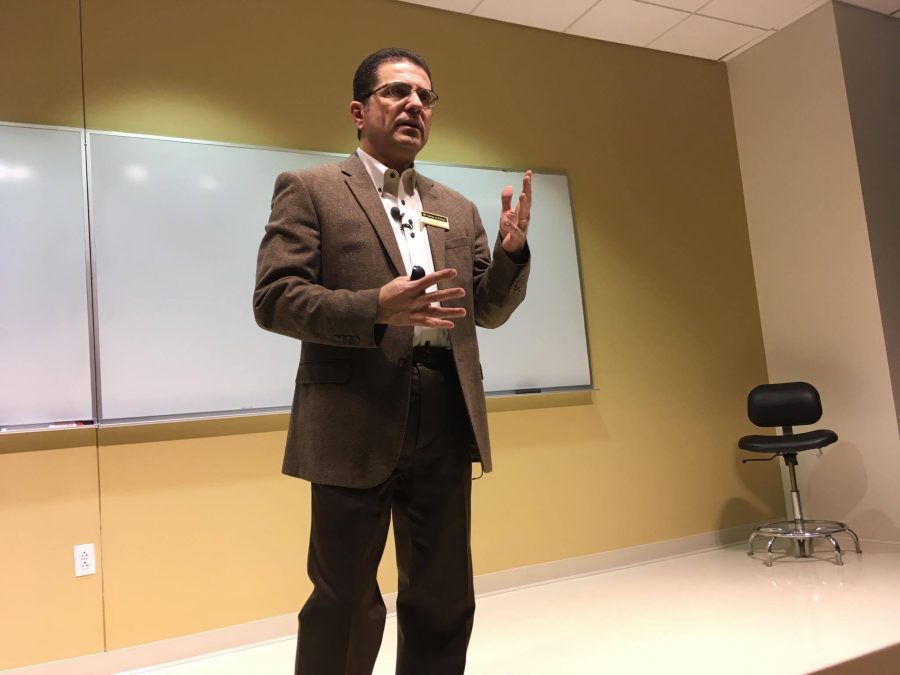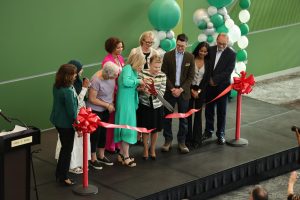What is going on with Cassini?
DalSanto gives some answers
Astronomy professor Joe DalSanto during his presentation
February 15, 2017
Astronomers have new reason to be hopeful about finding life outside of Earth after discovering water on one of Saturn’s moons.
This discovery brings this moon, Enceladus, on par with previous discoveries of liquid water on Mars.
Detailed pictures of the moon, which is nearly 790 million miles away from earth, shows the presence of a subsurface ocean.
These were new details an audience of around 100 people learned during a Sage Series: Cassini at Saturn at the Health and Science Center over the weekend.
But these conditions haven’t led to a conclusive answer as to whether life is habitable in some other place million of miles away.
These discoveries were made during a fascinating mission to space by a spacecraft named Cassini. Cassini has been on a mission to Saturn since 2004 and is set for a dramatic return after spending years investigating important details about the planet Saturn.
Cassini, unlike many spacecraft, isn’t orbiting in the plane of the rings, rather a steeply inclined orbit and will end its “grand finale” in that way.
“I guess we are going to let the cat out of the bag here,” said COD’s Astronomy professor Joe DalSanto. “It will be sent to the planet and the rings.”
The rings around Saturn that are usually illustrated as solids are really gasses, and there is something dramatic going on up there. The rings vary in densities, and their abilities to allow a passage of light differs. These are intriguing details about the planet we now know much more about since Cassini’s orbit.
It was a cozy evening, and students and community members gathered to listen to DalSanto’s lecture about the importance of the Cassini’s mission. DalSanto also averred how important past missions to space have affected our ever-growing technological advances.
DalSanto is a professor of astronomy here at COD and one of the faculty advisers to the Earth Science program. He has conducted series of lectures about planetary discoveries and currently runs a YouTube channel http://bit.ly/2lEzFHb where he talks about theories and discoveries in the field of Astronomy.
His next lecture is entitled: “Transformation: How the theory of Relativity Changed the World.” This event is scheduled for Feb. 24.


















